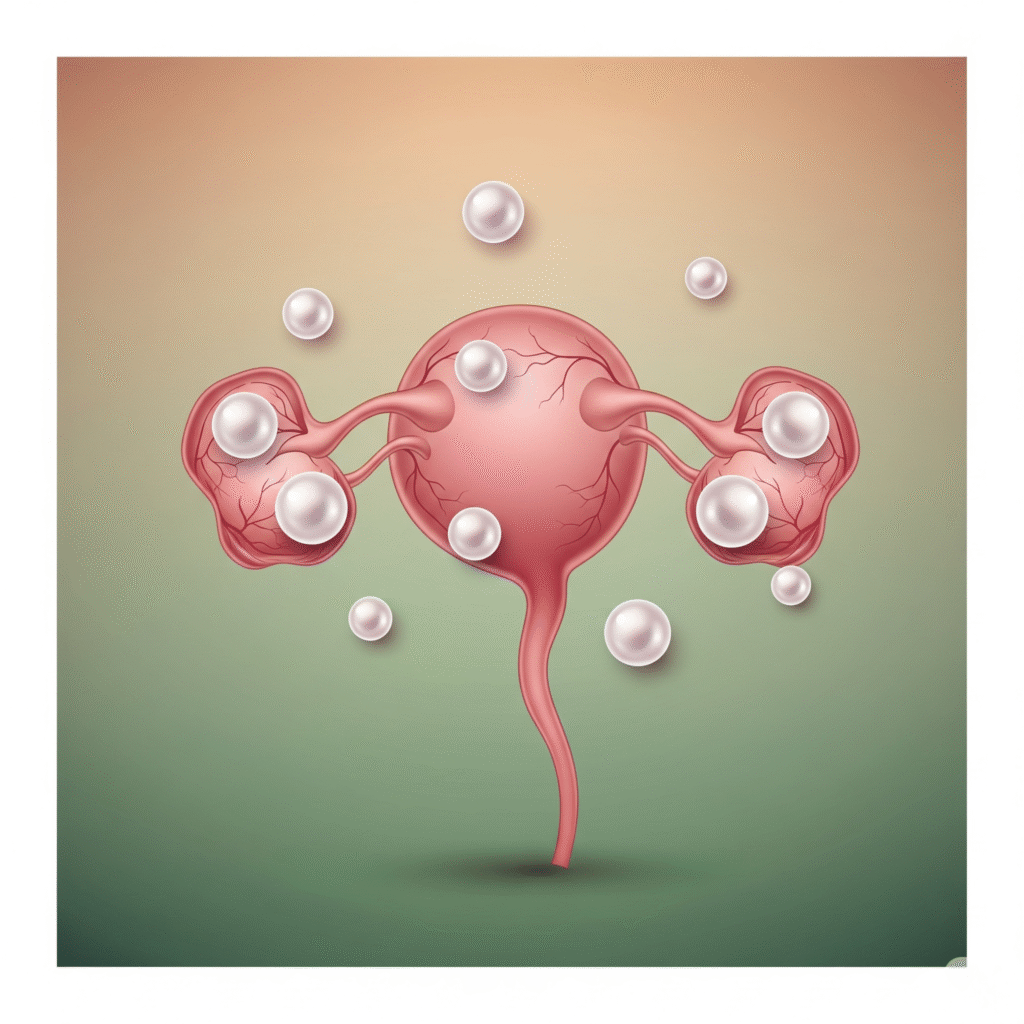Polycystic ovarian syndrome
Introduction
Polycystic ovarian syndrome (PCOS) is a common hormonal disorder that affects individuals with ovaries, usually during their reproductive years (age 15 to 44). It is characterized by a combination of symptoms related to hormonal imbalance, irregular menstrual cycle, and the presence of several small ulcers on the ovaries.
PCOS affects how ovaries work, leading:
- Irregular or absent ovulation
- Additional endrogen (male hormone) production
- Great ovaries
It can increase the risk of infertility, metabolic issues (such as insulin resistance), and type 2 diabetes, heart disease and endometrial cancer.

Types of Polycystic ovarian syndrome
Insulin resistant PCOS
The most common type. This occurs when the body becomes resistant to insulin, causing high insulin levels, which disrupts the hormone balance and triggers PCOS symptoms.
Post-Pill PCOS
Birth control occurs after stopping tablets. The body can temporarily produce additional androgens (male hormones), which can cause symptoms such as PCOS.
Inflammatory pcos
Due to chronic inflammation in the body. Inflammation increases androgen and interferes with ovulation, contributing to PCOS symptoms.
Adrenal pcos
Due to additional stress hormones (eg DHEA-S) from the adrenal glands instead of ovulation. It usually appears with high male hormone levels but normal insulin levels.
Causes PCOS ( Polycystic ovarian syndrome)
- PCOS can run in families due to genetic reasons.
- PCOS can run in families due to genetic reasons.
- Hormonal imbalance can affect ovulation and carry PCOS.
- High levels of male hormones can cause irregular periods and acne.
- Overweight or obesity affects the risk of PCOS.
- Inflammation in the body can increase male hormone levels.
- Not being physically active can worsen PCOS symptoms.
- Eating too much sugar or junk food can increase insulin levels.
- Excess stress can affect hormone levels in the body.
- Thyroid problems can make PCOS symptoms worse.
- Hormone problems from the brain (pituitary gland) can cause PCOS.
Clinical features of PCOS:
Irregular period
Women may have unknown, irregular or left time due to lack of ovulation.
Additional hair growth
Increased hair growth on the face, chest, or back due to high male hormone levels.
Acne and oily skin
Hormonal imbalance can cause pimples, especially on the face, chest and upper back.
weight gain
Many women with PCOs easily gain weight, especially around the stomach.
Dilute hair or hair loss
Scalp’s hair can be thin or fall out due to high endrogen.
Symptoms associated with Polycystic ovarian syndrome
- Irregular or left menstruation.
- Excessive hair growth on the face, chest, or back.
- Acne or pimples on the face, chest and back.
- Thin of collapse of skull hair or hair.
- Difficulty in losing weight or sudden weight loss.
- Black patches on the skin, especially on the neck or underarm.
- Mood, anxiety, or depression.
- Difficulty in getting pregnant due to irregular ovulation.
Investigations in Polycystic ovarian syndrome
- To check many small ulcers in the ovaries and measure their size.
To check the levels of LH, FSH, testosterone, estrogen and prolactin for hormone imbalance.
To detect insulin resistance or diabetes risk.
To meet thyroid problems that can cause similar symptoms
To check the levels of cholesterol and triglyceride, which may be higher in PCOS.
- Often high in PCOS; Helps assess the ovarian function.
To detect insulin resistance which is common in PCOS.
